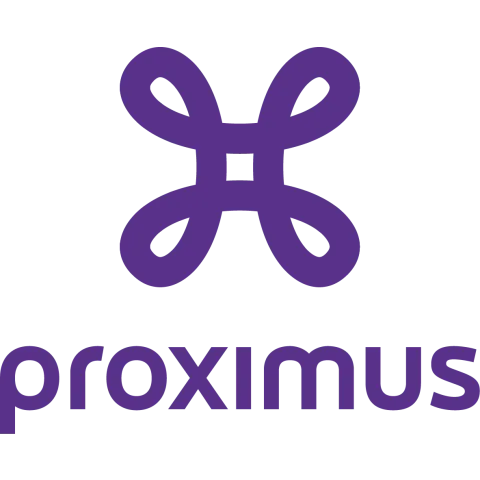Proximus, formerly known as Belgacom Mobile, is the largest mobile telecommunications company in Belgium and is part of the Proximus Group. The company was established in 1994 as a joint venture, with Belgacom owning a 75% stake and AirTouch holding the remaining 25%. The latter was subsequently merged with Vodafone. In 2006, Belgacom acquired the outstanding shares from Vodafone, consolidating its ownership of Proximus.
The company originally operated the MOB2 analogue network and the second-generation GSM network, starting from January 1994. Proximus maintained a de facto monopoly until the telecommunications market was deregulated, leading to the entrance of other operators such as Mobistar (now Orange Belgium) and BASE. In 2014, Belgacom rebranded its Pay-TV business under the Proximus name, thereby integrating its landline and mobile telephone services along with its broadband services under a single brand.

3G Network
The company operated 2G GSM services over 900 and 1800 MHz, and 3G services over B1 (2100 MHz) and B8 (900 MHz) since June 2006. The 3G switch-off date was set for end-of-year 2024.
3G Frequency Bands
| Network Frequency Band | Status |
|---|---|
|
Active
|
|
|
Active
|
3G Network Events
| Date | Event | Subtype |
|---|---|---|
|
|
Launch of 3G Network
|
Launch
|
4G Network
In June 2011 Proximus announced 4G LTE plans over B3 (1800 MHz) which went live November 2012. The company has since added B7 (2600 MHz) and B20 (800 MHz), switching on LTE-A 4G+ carrier aggregation in October 2015. Branded as 4.5G, Proximus launched LTE-A Pro in February 2017, adding B1 (2100 MHz) and advertising data rates up to 900 Mbps in selected areas.
Proximus is one of few carriers utilising Multipath-TCP (MPTCP) to aggregate a 4G LTE connection with fixed line DSL services to deliver improved data rates to rural customers.
Since 2015 the company had originally backed LoRa for its nationwide IoT network deployment, until announcing the launch of a complementary national NB-IoT network in May 2018 on its B20 carrier.
4G Frequency Bands
| Network Frequency Band | Max. Channel Bandwidth | Status | Known EARFCNs |
|---|---|---|---|
|
5
|
Active
|
||
|
20
|
Active
|
1300
|
|
|
20
|
Active
|
2850
|
|
|
Active
|
3625
|
||
|
10
|
Active
|
6300
|
4G Network Events
| Date | Event | Subtype |
|---|---|---|
|
|
Launch of 4G Network
|
Launch
|
5G Network
Early testing in November 2016 conducted in partnership with Huawei achieved data rates in excess of 70 Gbps. In conjunction with Huawei, the company announced the successful testing of n78 (3500 MHz) 5G in April 2018, achieving peak data rates of 2.94 Gbps and an end-to-end latency of 1.81 milliseconds.
The network launched in April 2020, initially using n1 (DSS), but later adding n28 and n78.
5G Frequency Bands
| Network Frequency Band | Max. Channel Bandwidth | Status | Known EARFCNs |
|---|---|---|---|
|
Active
|
426030
|
||
|
10
|
Active
|
156510
|
|
|
100
|
Active
|
650016
|
5G Network Events
| Date | Event | Subtype |
|---|---|---|
|
|
Launch of 5G Network
|
Launch
|